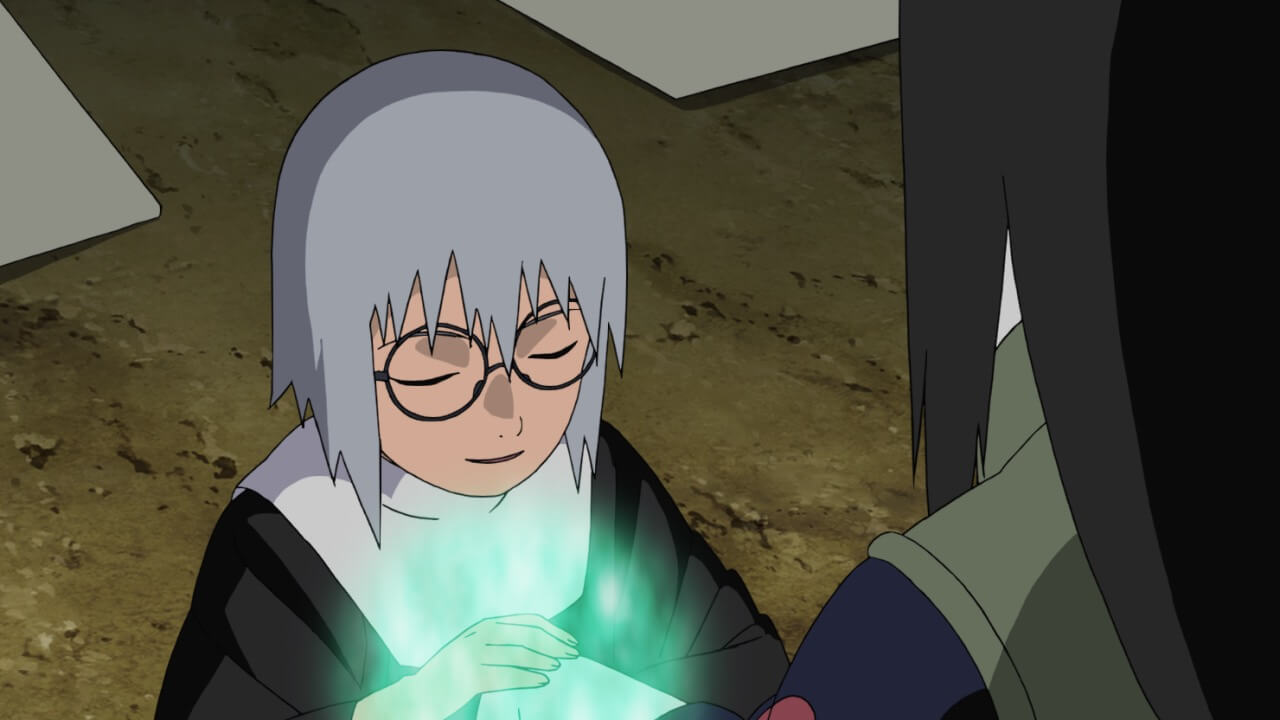I’m writing this because Kabuto’s multifaceted story really caught me off guard during my own viewing experiences. At first, he seemed just another peripheral presence—a polite yet unremarkable wannabe ninja—until I realized how deeply intertwined he is with some of Naruto’s most pivotal events. My goal here is to share why I find his character so compelling and why I believe he deserves more recognition among anime fans.
Spoiler Alert: This article delves into key plot points of the Naruto series, focusing on Yakushi Kabuto. If you haven’t caught up, consider this a warning!
PROFILE

A close associate of Orochimaru—one of the Legendary Sannin—he serves the Village Hidden in the Sound as both a spy and a medical specialist, operating from the shadows as Orochimaru’s right hand. Originally affiliated with the Hidden Leaf Village’s Root division, he began working as a spy across the Five Great Nations around the age of nine. By about fourteen, Orochimaru recognized his unique potential and recruited him, leading them both into an all-consuming quest for comprehensive knowledge.
| Ninja Registration Number | 12140 |
| Birthday | February 29 |
| Zodiac Sign | Pisces |
| Blood Type | AB |
| Personality | Calculative, cold-blooded |
| Height | 176.2 cm (Age 19) → 177.0 cm (Age 24) |
| Weight | 65.0 kg |
| Favorite Foods | Salt-grilled horse mackerel, salt-grilled sea bream |
| Disliked Foods | Raw meat |
| Favorite Phrase | “Ever-changing” |
| Hobby | Maintaining scalpels |
| Opponent He Wants to Fight | Naruto Uzumaki, Sasuke Uchiha → Orochimaru |
| Voice Actor | Nobutoshi Canna, Mariko Mizuno (Childhood) |
First Impressions: The Quiet “Upperclassman”

When Yakushi Kabuto is introduced as a soft-spoken participant in the Chunin Exams, he appears helpful, if a bit awkward. He courteously assists Naruto and his team by providing valuable intel, all while acting like he can barely make it through each exam himself. In hindsight, his encyclopedic knowledge and calculated remarks are clear signals that he’s more than just a timid underdog.
Kabuto’s subtle spying intensifies during the second phase of the Chunin Exams in the Forest of Death. There, he not only supports Team 7 with medical expertise but also discreetly observes Sasuke’s cursed seal and Naruto’s unusual energy. I remember thinking, “Isn’t he a bit too accommodating?”—only to realize later how masterfully he played the role of the unassuming teammate.
Orchestrating Chaos: The Konoha Crush
Kabuto’s elaborate ruse peaks during the Leaf Village’s Chunin Exam finals. Disguised as an ANBU operative, he unleashes the genjutsu “Temple of Nirvana,” putting most of the spectators to sleep. This moment was pivotal for me personally: it showed just how meticulous and powerful Kabuto could be when serving Orochimaru’s ambitions. The fact that he orchestrated chaos amid thousands of skilled observers underscored his sharp intuition and advanced capabilities—traits that set him apart from most side characters.
Confrontation with Tsunade
A true test of Kabuto’s skill emerges when he and Orochimaru seek out Tsunade, one of the Legendary Sannin, to heal Orochimaru’s sealed arms. Even with Tsunade’s fearsome reputation, Kabuto manages to hold his own. He uses his “Chakra Scalpel” to inflict deep internal damage without external wounds and counters Tsunade’s nerve-disrupting technique with almost instantaneous precision. Seeing him adapt to these powerful attacks in real time highlights his medical genius and strategic thinking. Although Naruto’s Rasengan ultimately injures him severely, Kabuto recovers quickly enough to escape alongside Orochimaru, showcasing his extraordinary resilience.
The Power of Identity—and Its Cost
Much of Kabuto’s unwavering resolve stems from a turbulent backstory. As a war orphan with no memories, he was raised in a Leaf Village orphanage, where he gained medical training and the only sense of belonging he’d ever known. Later, dark manipulations by the Root organization pit him against the very person he saw as a maternal figure—an event that shatters his self-image.
This personal crisis fuels his lifelong identity struggle. He latches onto Orochimaru’s vision of acquiring knowledge by any means, ultimately believing he could define himself if only he collected enough power and secrets. I find these layers of Kabuto’s past especially poignant—it’s a reminder that beneath his calm composure lies deep-rooted pain, urging him toward obsessive research and experimentation.
Surpassing Orochimaru: A Sinister Evolution

After Orochimaru’s defeat by Sasuke, Kabuto confronts an existential void. Determined to surpass his fallen master, he injects Orochimaru’s cells into his own body. I recall being stunned at how willingly he transformed himself into a conduit for Orochimaru’s essence. Later, during the Fourth Great Ninja War, Kabuto elevates Orochimaru’s reanimation technique to resurrect legendary shinobi—from fallen Akatsuki members to formidable Kage. He even perfects Snake Sage Mode in the Ryuchi Cave, becoming a terrifying threat capable of shifting the war’s outcome.
One of the most jaw-dropping moments is when Kabuto summons the real Madara Uchiha, blindsiding both Tobi (Obito) and the Allied Shinobi Forces. In that single act, he reveals the full extent of his cunning, knowledge, and ambition—demonstrating that he’s no longer a supporting henchman but a major puppet master in his own right.
The Final Trial: Facing the Uchiha Brothers
Kabuto’s thirst for recognition collides with fate when he crosses paths with the Uchiha brothers, Itachi (resurrected yet free from Kabuto’s control) and Sasuke. Kabuto unleashes a lethal combination of abilities gained from the Sound Four, advanced medical chakra techniques, and Snake Sage Mode. He appears unstoppable until Itachi uses the forbidden genjutsu “Izanami,” trapping Kabuto in an endless loop that forces him to confront the lies and insecurities he’s amassed.
I personally found this reversal of fortune both dramatic and meaningful. Kabuto had acquired staggering power yet was vulnerable to self-reflection. Izanami compels him to see how his patchwork identity left him spiraling toward ruin. This culminates in a rare, redemptive moment: after accepting his weaknesses and illusions, Kabuto uses his medical expertise to aid the wounded, including Sasuke, the very person he once helped Orochimaru pursue.
Redemption in a New Light
Post-war, Kabuto’s return to the orphanage marks the quiet conclusion of his long, turbulent journey. Running the facility alongside an old friend reaffirms that he’s finally found a genuine place in the world. That final glimpse reveals a man whose tragic mistakes fueled his growth—someone able to reshape his life by facing the roots of his identity crisis.
Reflecting on Yakushi Kabuto’s transformation—from an easy-to-dismiss medic-nin to a central catalyst fueling massive battles—underscores how complex the Naruto series can be. His path deftly weaves themes of betrayal, identity, ambition, and the yearning for acceptance. What started as mild curiosity turned into genuine admiration once I realized how central he is to the manga’s and anime’s core conflicts.
I wrote this article to unearth Kabuto’s often-overlooked significance. His trials convey that power without self-understanding can lead to a spiral of desperate actions—and that even those who lose their way can still rediscover purpose. Ultimately, Yakushi Kabuto’s story exemplifies why Naruto remains beloved worldwide: it’s more than epic fights; it’s a testament to empathy, redemption, and the struggle to belong.
Below are articles related to this topic. If you’re interested, feel free to explore!







